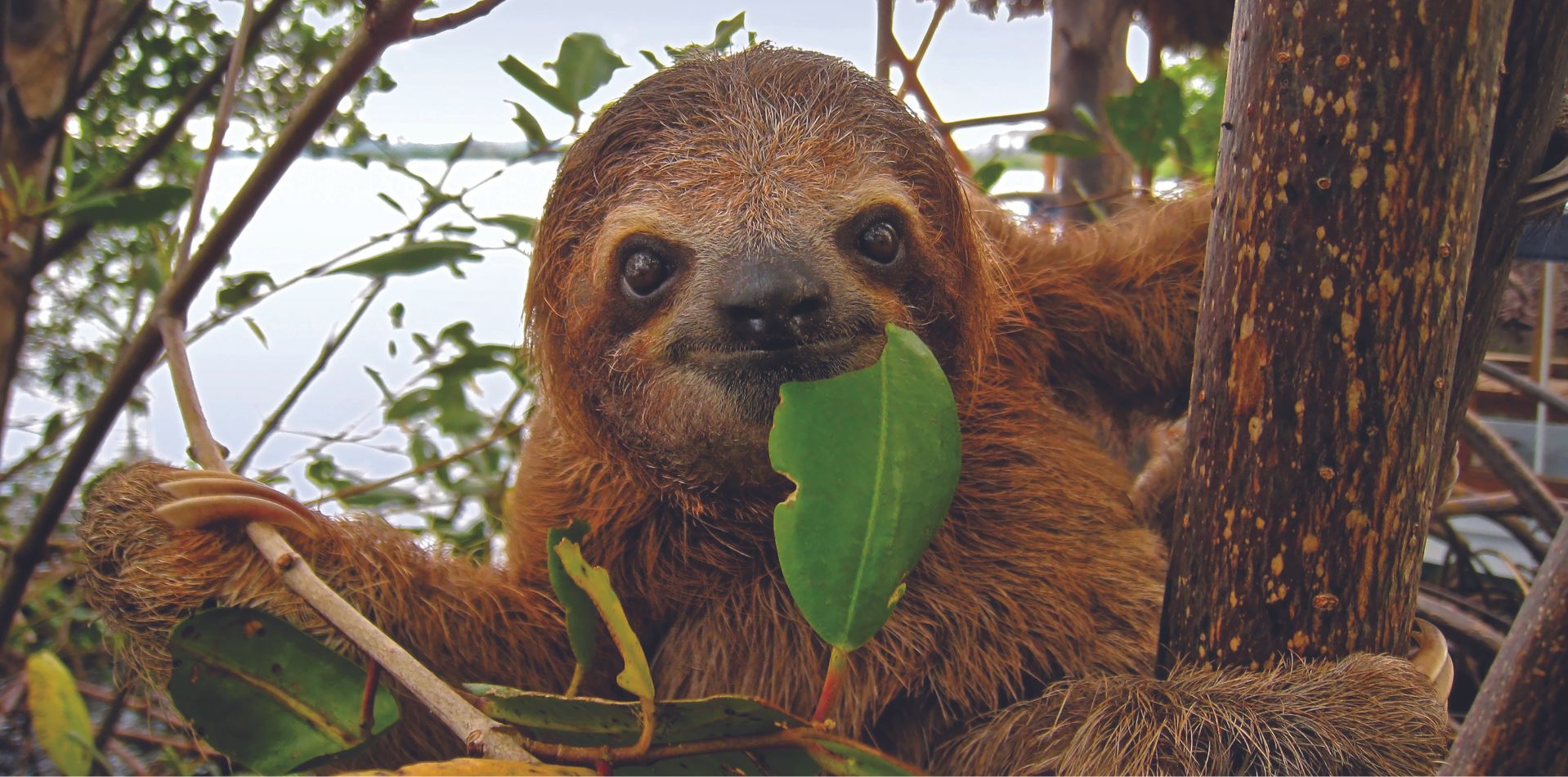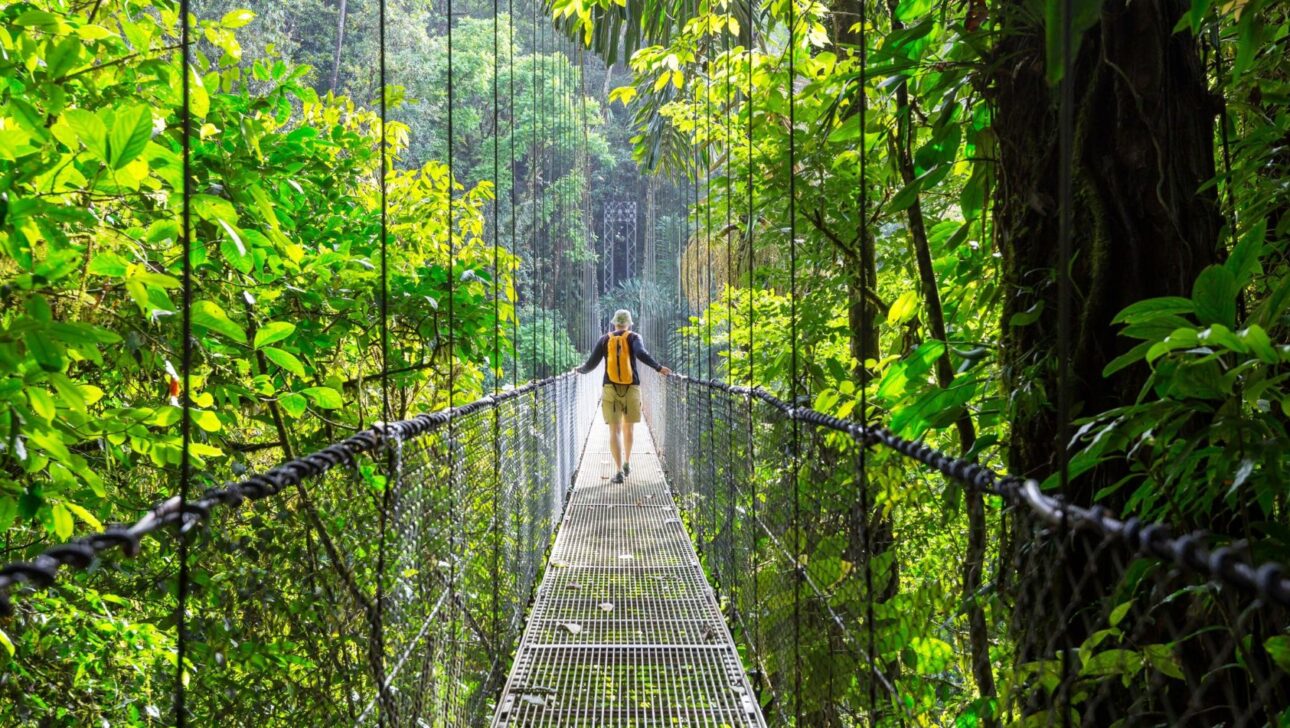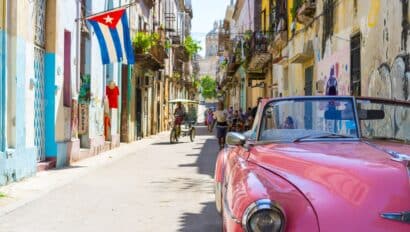While colorful Costa Rica makes up a mere .03% of the Earth’s land mass, it contains a whopping 5% of the world’s biodiversity. Thankfully, this laid-back Central American country known for its safety and cleanliness is setting commendable examples for conservation with 27 national parks, 58 refuges for wildlife or sanctuaries, 32 protected zones, and 19 forest or biological reserves – meaning a quarter of the entire country is a protected paradise! There are dreamy cloud forests, sandy shores of both the Caribbean and the Pacific, and even picturesque volcanoes, making exploration possible by foot, raft, kayak, or zipline. While it’s impossible for us to choose a favorite, here are ten wildlife superstars we always look for on our Costa Rica Wildlife Walking Adventure.
American Crocodiles
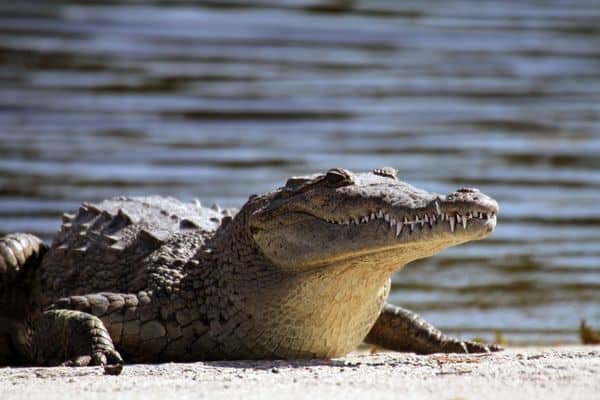
An absolutely prehistoric-looking creature, this powerful reptile is distinguishable from its cousin, the American alligator, by its longer, thinner snout, lighter color, and two teeth on the lower jaw that are still possible to see with its mouth closed. It’s one of the largest crocs in the world, with males reaching massive lengths of up to 20 feet! Found in lowlands and rivers, we have the chance to safely see these magnificent animals up close on our boat safari – and their characteristic ability to be still makes them very easy to photograph.
Scarlet Macaws
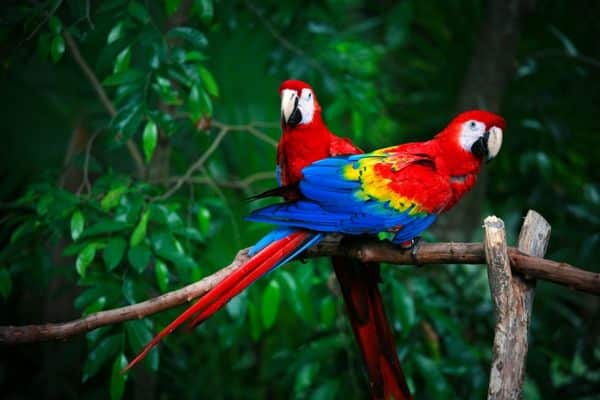
Another highlight on our river safari is the scarlet macaw, an instantly recognizable red, yellow, and blue parrot. Widely regarded by bird lovers as the most beautiful parrot, this flashy monogamous bird usually found in pairs is full of energy and tends to make its location known with big vocalizations and can even mimic human speech. In Costa Rica, an estimated 1500 Scarlet Macaws live in dry, moist, and wet tropical lowland forests mostly along the Pacific Coast, so it’s possible to spot them when we explore around Manuel Antonio National Park as well.
Kingfisher

Not to be outdone by the flashy scarlet macaws, kingfishers are master dive bombers with flair. By almost any lazily moving water in Costa Rica, you might see a whoosh of color as it quickly shoots past, then see something disappear into the water and come flying out just as fast with a fish in its hunting spear bill. Costa Rica is home to six species of the family Alcedinidae (named for Alcyone, daughter of Aeolus, Greek god of the winds). She married Ceyx, but they made Zeus mad and he struck Ceyx’s boat with a thunderbolt causing him to drown at sea. Alcyone dove headfirst into the waves. Inspired by her devotion, the gods transformed her into a kingfisher. When you see a kingfisher in Costa Rica, remember this love story.
White-faced Capuchin
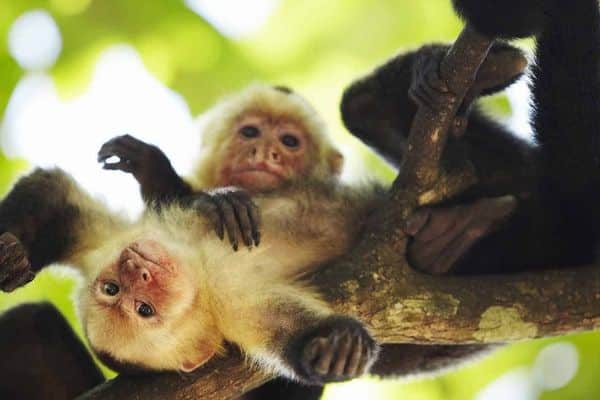
This monkey is more than just a pretty face – they keep such a diverse diet, and their actions strongly impact the vegetative populations in their habitats. Their constant movement from dawn til dusk through the forest disperses seeds of the fruits they eat and prunes other plants on their path, stimulating branching. This cool monkey even has knowledge of using crude tools as weapons during food gathering and also has some knowledge of medicinal plants! Capuchins are one of the smartest monkeys – so much so that they have been trained to help paraplegics in their daily lives.
Squirrel Monkeys
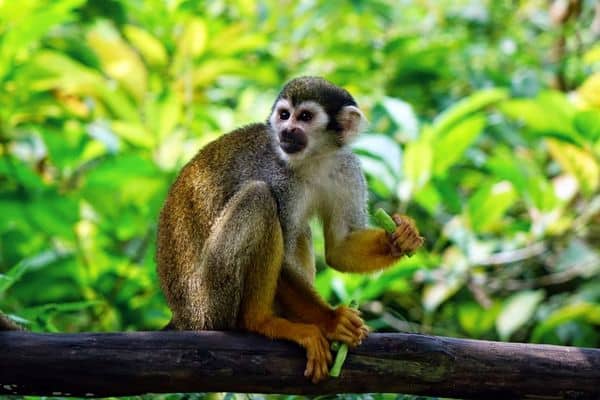
The smallest of the four Costa Rican primate species, this one sadly is classified as Vulnerable by the International Union for Conservation of Nature. Close in behavior to capuchins, these omnivorous monkeys are the arboreal goats of the jungle and they often forage with capuchins from May through October. Quite the looker, the squirrel monkey is a greenish yellow color, with a white throat, face, and ears and a black muzzle and tail tip on its long prehensile tail. Its habitat is restricted to the northwestern tip of Panama near the border with Costa Rica, and the central and southern Pacific coast of Costa Rica (primarily in Manuel Antonio and Corcovado National Parks).
Sloths
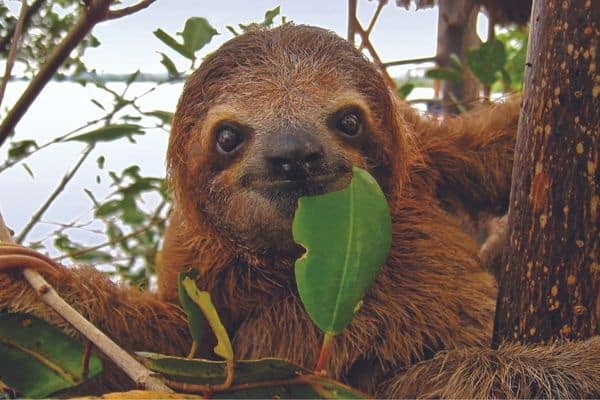
No matter what age a traveler is, giggles of delight seem to happen any time there is a sloth sighting. A highlight of our exploration of Manuel Antonio Park, we have the chance to see two different species in Costa Rica. The Hoffman’s Two-toed Sloth is nocturnal and so a bit more tricky to find (during the day they nap, and without any movement they camouflage expertly with the forest). The most common three-toed sloth in the world is the diurnal Brown-throated sloth, and these are the ones we have the best chance of spotting with our trained guides on our Wildlife Walking Adventure. The reason that sloths are notoriously lazy is that they have the slowest digestion system of any mammal, taking up to two weeks to fully digest a meal! To conserve energy, they’ve evolved to do less rather than eat more.
Coatis
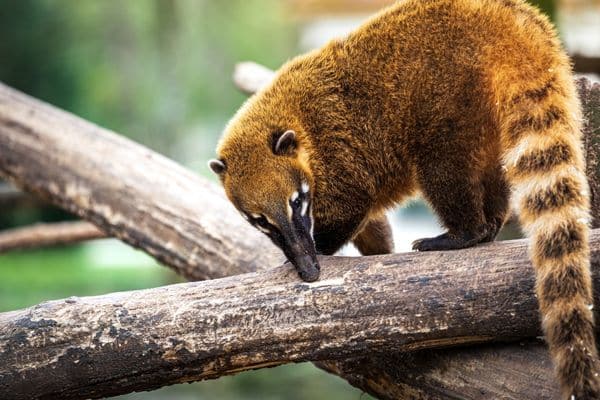
While sloths and monkeys get a lot of attention, the coati might secretly be Costa Rica’s most fun mammal to see. They are members of the raccoon family and are pretty much diurnal raccoons with fox-like faces and long, fuzzy tails sticking straight up in the air. If you pay attention you can spot them almost everywhere you go – even along forest-patched streets in neighborhoods in San Jose. But beware – they are pretty friendly and incredibly smart. They usually watch humans while they are eating with the hope of quickly grabbing a little bite for themselves.
Toucans
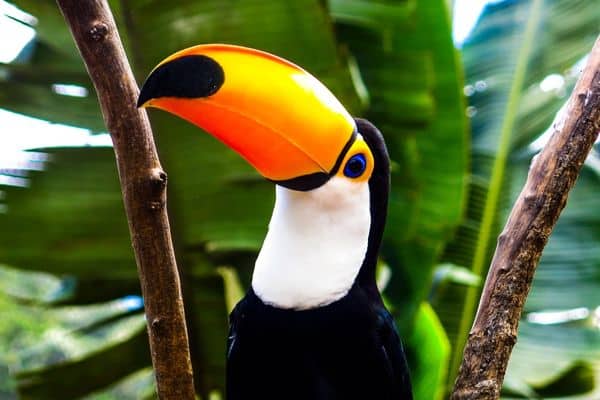
There’s not just one, but six species of the massive-beaked toucan found in Costa Rica. They are the clowns of the bird kingdom and it’s sometimes possible to see them playing with their food in the treetops, tossing a small piece of fruit into the air and skillfully catching it almost like popcorn. Social creatures, they cram an extended family or small flock into one or two nest holes and are constantly good-naturedly sword dueling with their big beaks.
Butterflies
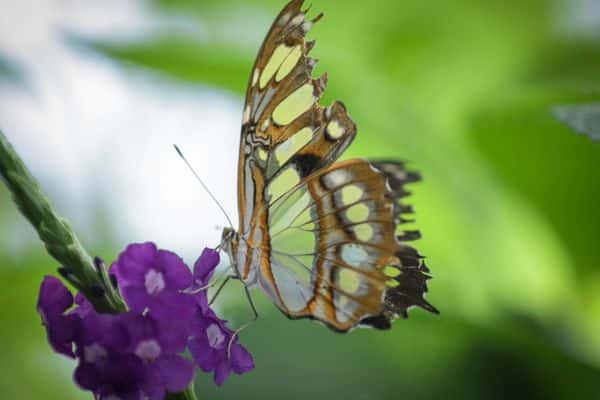
Just when you think the scenery couldn’t get any more magical, imagine a massive blue morpho butterfly flitting by you. Costa Rica is home to 18% of the world’s butterfly species, meaning that there are thousands of different butterfly species constantly flying around. Another fan favorite is the elegant glass-wing butterfly, whose transparent wings make it simple for them to camouflage and hide from predators. To give a better idea of the abundance of butterflies here, there are over sixty varieties of just glass wing butterflies to enjoy here! On the first day of our Wildlife Walking Adventure, we have the opportunity to visit a Butterfly Conservatory to learn more about these fabulous friends.
Hummingbirds
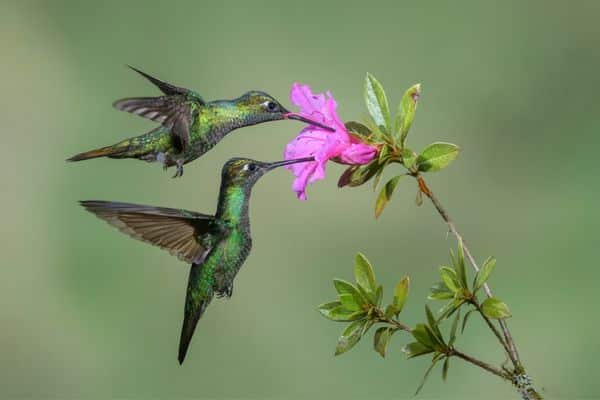
As if thousands of butterflies on day one wasn’t enough, we can see 26 different species of hummingbirds in the rainforest walk on day one of our itinerary as well. Costa Rica is home to 53 species of hummingbirds—about three times the number found in the United States (and unlike the hummingbirds in the US, these birds don’t migrate). Expect to see a mind-blowing amount of diversity, whether you’re up in the mountains or in the verdant rainforests. We recommend keeping a small pair of pocket binoculars on hand to be charmed by these creatures in full magnificent detail.
Because Costa Rica is temperate and so easily accessible from the US, you can join us any time of the year for a spur-of-the-moment wildlife getaway to recharge and connect profoundly with the wonders of the natural world.
